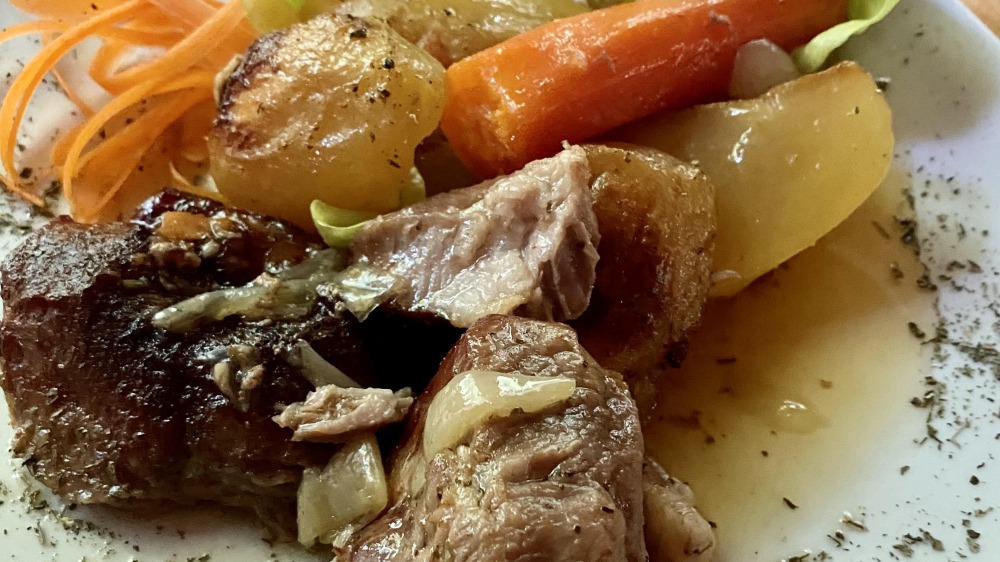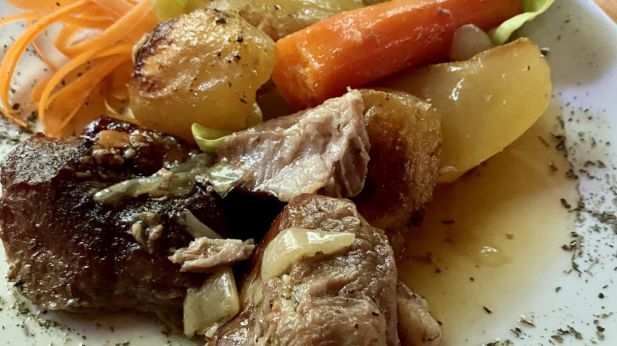

Montenegrin cuisine can be divided into three regions: Northern, Continental, and Mediterranean. Nearly all products are organic, and the tastes are distinctive. A traditional form of cooking is under the coals in a pot known as a sac.
The northern area features forest berries, blueberries, raspberries, and strawberries, alongside herbal teas and wild mushrooms. The most popular local homemade specialties include sour cream (kajmak), yoghurt, and cow’s and sheep’s cheese, which vary in taste from household to household. The finest kajmak comes from Trsa, the highest pasture in Durmitor, naturally flavored with wild herbs. Key dishes include stewed sauerkraut, lamb cooked in milk, peppers in milk cream (kajmak), and Durmitor steak. Montenegrins are mainly meat-eaters, with different kinds of meat served for every lunch and dinner.
The continental area showcases a bounty of fish from Skadar Lake, especially carp, trout, and eel, which are smoked, fried, or served in salads. People from these parts also prepare smoked ham, cheese in olive oil, sausages, and smoked mutton ham. Notable specialties from the Pogorica area include cabbage leaves stuffed with minced meat and rice, and carp with risotto and dried plums.
The Mediterranean region is known for its holy trinity: various kinds of seafish, homemade olive oil, and wine. Olive oil is the basis of every meal, enhancing fish, salads, vegetables, and sauces, often flavored with garlic and parsley.
Montenegro produces both red and white wines, but the former have more character. Vranac is the best known and very drinkable red wine, with a fine ruby color and a Mediterranean character. Vranac Pro Cordem is high in prothoanthocyanidol, marketed as beneficial for the heart. Merlot is another popular variety, while Krstac is a pleasant dry white competing with local Chardonnay and Sauvignon.
The real national liquors are different kinds of brandies (rakija). Loza, a white grape brandy, is a universal mark of Montenegrin hospitality and goodwill. The slightly upmarket version is Kruna, distilled in copper stills fired with vine twigs and wood. Podgorica's brand is called Crnogorski Prvijenac, and plum brandy (sljivovica) is also well-known. Rakija is served everywhere, in every situation, often with friends and family, or as an aperitif with desserts. It's also used as a base for cocktails, making it an unavoidable drink for any occasion, from birthday parties to wedding ceremonies and family celebrations.
Montenegro also boasts a variety of local beers, produced by numerous breweries that have won prizes at international fairs and exhibitions. Some of these beers have even become national drinks, showcasing the country's brewing prowess.
Montenegro's culinary landscape is as diverse and rich as its natural beauty. From the northern forest berries to the coastal seafood, every meal tells a story of tradition and innovation. Whether you're savoring a glass of Vranac or enjoying a hearty dish cooked under the coals, Montenegro's cuisine promises an unforgettable journey for your taste buds.
Explore Montenegro’s food and drink and let your palate discover the authentic tastes of this beautiful country!




Planning family or group holiday? Need transfer? Accommodation? Special food requirements? No worries, we’ll take excellent care of every aspect of your holiday! Our goal is to make your vacation very special. Contact us!
 +382 69 310 848
+382 69 310 848
 [email protected]
[email protected]

We are currently closed for the season.
Reservations for our 2026 season will reopen starting 15th February 2026.
We look forward to welcoming you back for new adventures on the Tara River!
We are currently closed for the season.
Reservations for our 2026 season will reopen starting 15th February 2026.
We look forward to welcoming you back for new adventures on the Tara River!
Best regards,
The Waterfall Team
Best Regards,
Waterfall Team
On this site, we use cookies to enhance the user experience and analyze traffic. By continuing to use this site, you agree to our use of cookies.